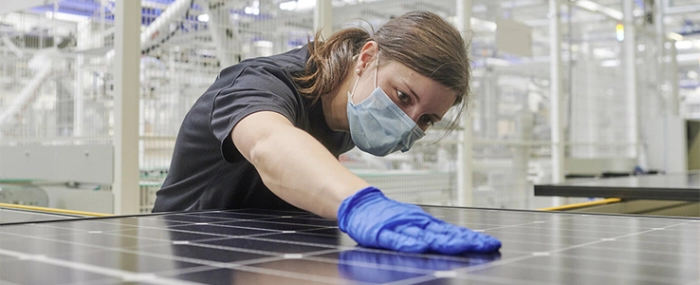
© Meyer Burger
Electronics Production |
Meyer Burger is looking for the right spot for US production
Meyer Burger Technology says it plans to establish a production site for high-performance solar modules in the United States. The company is currently in discussions with several U.S. states to determine the final site location.
The company says in a press release that the investment is in line with its ambition and commitment to produce modules near end-customers, source material from regional suppliers, and improve overall sustainability.
Right now the company is in discussions with several – unnamed – U.S. states to determine the final site location, however, a final decision is expected by the end of 2021.
The company's decision to continue to expand the company’s solar energy supply chain to the U.S. is supported by a strong domestic solar market and positive economic policy conditions. The initial production capacity will be 400 MW – with potential for further growth to multiple gigawatts capacity – and will include capabilities to manufacture solar modules for residential, commercial/industrial rooftop, and utility-scale applications. Production is expected to be operational by the end of 2022, and, at full capacity, the company says the new facility is expected to employ hundreds of skilled manufacturing workers.
“The United States has a rich history in the solar industry. The world’s first photovoltaic production facility was established in California in the 1970s - well ahead of Europe and Asia. Now it is time to return to the industry’s roots and help end dependency on offshore imports. Our proprietary Heterojunction cell technology and patented SmartWire module technology enable us to produce the highest quality and highest performance products for economically competitive solar energy for our customers," says says CEO Gunter Erfurt in the press release.
Meyer Burger is considering a shortlist of several U.S. states for the company’s facility. Key criteria for site selection include existing facilities, regulatory, and tax frameworks, state and local economic development programs, available skilled workforce capacity, proximity to transportation infrastructure, renewable power supply, and local community commitment.

